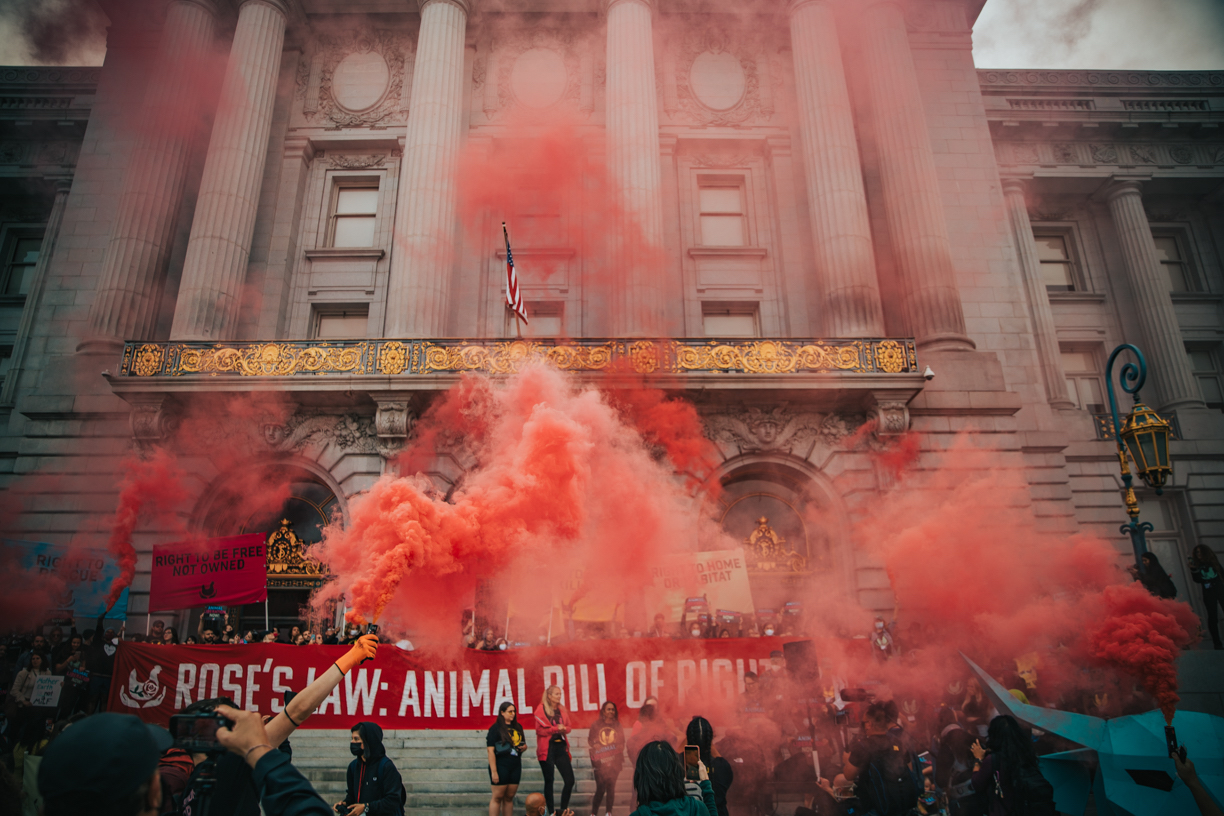"An Opiate to the Conscience": Welfarism as a Step to Animal Liberation?
"An opiate to the conscience": welfarism as a step to animal liberation?
By Brian Burns

Advocates of welfarism often claim that while the “humane” use and murder of animals is not the end goal, advocating for welfare reforms while not challenging the notion of animals as property will make the public more sympathetic to animal rights, and thus move us towards animal liberation. Whole Foods CEO and self-professed “ethical vegan” John Mackey, for example, unapologetically frames Whole Foods as a groundbreaking progress-maker for both animals and public consciousness in response to an open letter by James McWilliams calling for the company to stop selling meat.
Is this correct? Is there historical evidence showing that a moderate message which appeals to those in the “middle of the aisle” will eventually push them closer to one end? To examine this question, I discussed trends in the antislavery movement in the US from the mid-1810s through the 1830s as part of a DxE open meeting on welfarism . Most of the information presented was gathered from Paul Goodman’s book, Of One Blood.
“An Opiate to the Conscience” - The American Colonization Society of the Early 1800s
From the early 1800s, the antislavery movement in the United States was dominated by a large, government-backed group called the American Colonization Society (ACS). As Paul Goodman writes, “The most important function of the ACS was to ensure sectional harmony by offering a platform sufficiently broad and vague on which both slaveholders and nonslaveholders, professed abolitionists and anti-abolitionists, North and South, could stand” (Goodman, 18). Despite its stated purpose - to improve the welfare of slaves in the South and convince their masters to free them to an ACS-created colony in West Africa, “the ACS renounced any intention of interfering with slavery in the United States. (Goodman, 16).” In fact, the society was extremely hostile towards those agitating against slaveowners: “It insisted that any agitation that placed masters under moral scrutiny or political pressure or questioned their Christian benevolence would chill the inclination to manumit … Nor must one ever speak too harshly of slavery itself, the suffering of the victims and the cruelty of the master, lest slavery become a moral issue for public discussion” (Goodman, 18-19).
The American Colonization Society, far from pushing the public towards abolitionism, reduced both Southern and Northern tension surrounding the issue of slavery. From our talk on the psychology of welfarism, we know that discomfort and cognitive dissonance are essential to motivate people to change their deep-set beliefs - and the ACS was extremely efficient at reducing both of them. Goodman writes, “In the North, apathy and indifference toward slavery were the toughest barriers… For most, until abolitionist agitation pricked their consciences, was a distant abstraction” (Goodman, 124). Despite the organization’s widespread popularity both in the South and North and consensus at the time that it was pushing towards abolition, the resolution of tension and feel-good consciousness created by the society were, according to Fogel and many others, some of the “toughest barriers” towards the end of legal human slavery in the US.
The Importance of Agitation
By “abolitionist agitation,” Goodman refers to the explosion of grassroots antislavery activism in the 1830s. Sparked by activists who felt silenced by the ACS (many of whom were former members of the society), independent chapters of self-styled “immediatists” began to pop up around the country, learning from each other via long letters and word of mouth. The action taken by these activists was radical and dangerous: William Lloyd Garrison’s public burning of the US constitution, which he called a “covenant with death”, almost left him dead after a lynch mob attempted to murder him (ironically he was saved by the police, who seized him and threw him in jail for his protest). Goodman writes that “Abolitionism grew, by contrast , in the teeth of elite hostility, intense popular prejudice, and physical violence, and it required an exceptional organizational and ideological commitment.”
Despite these obstacles, however, the radical abolitionist movement was extremely successful, growing from four to 1348 independent chapters in just six years - a 34,000% increase in activism (Goodman, 124). This exceptional growth coupled with a strong message and provocative activism had extreme influence on public dialogue and political action on slavery, pushing public tension to ultimately to the brink of the Civil War. And as the antislavery societies rose across the US, the ACS was put on the defense, eventually discredited as a racist organization opposing rather than acting for progress.
What Can We Learn?
Despite its profound power, agitation can be extraordinarily difficult as social animals. The nice, middle-of-the-road approach is often much more appealing, and often may seem to be the more effective way to enact change, since it does not elicit backlash. No surprise then, that companies such as Whole Foods have capitalized on its appeal to consumers by offering the same products of violence - meat, dairy, and eggs - sold in a more “compassionate” way.
Unfortunately, the appeal of “moderatism” is precisely the reason behind its failure; in order to motivate people to reconsider their deep-set beliefs, one has to make them uncomfortable by presenting very different alternatives, and disrupting routine to force attention to these alternatives. Sometimes, seeking to reform the periphery of the system without attacking its root is the best way to ensure it survives and thrives. Such was the case in the American antislavery movement in the early 1800s, and such may be the case in the animal rights movement today.
Other articles

Tulare County Dairy Farms Are Poisoning Latino Communities

The Case for Systemic Change




